Zaha Hadid Architects
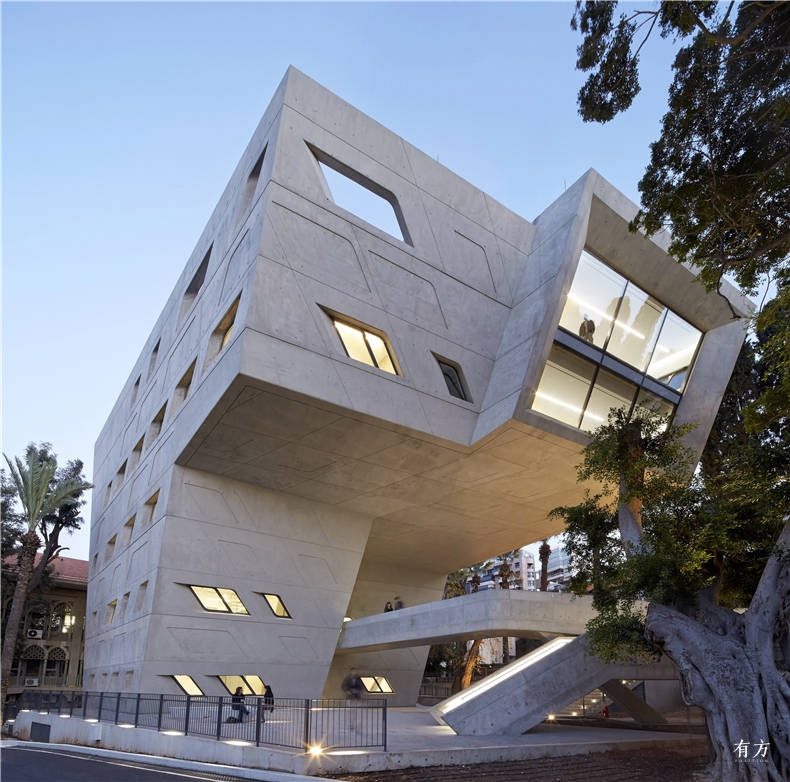
伊萨姆·菲尔斯学院隶属于贝鲁特美国大学 (the American University of Beirut (AUB)) ,它是“公共政治和国际关系”系的大楼 (Public Policy and Inteational Affairs (IFI)),由扎哈·哈迪德建筑师事务所 (ZHA) 设计。2002年,佐佐木建筑事务所设计了AUB校园总体规划(与Machado & Silvetti事务所、美国MGT顾问设计团队、Dar Al-Handasa、Shair&Partners事务所联合设计),伊萨姆·菲尔斯学院在该规划方案下细化建造,配备有高国际水准的设施,希望以此推动该大学21世纪的学术研究。
The Issam Fares Institute for Public Policy and Inteational Affairs (IFI) building by Zaha Hadid Architects (ZHA) at the American University of Beirut (AUB) continues the on-going implementation of the 2002 AUB Campus Master Plan by Sasaki Associates (in collaboration with Machado and Silvetti, MGT of America, and Dar Al-Handasa, Shair and Partners) to advance the university’s academic mission in the 21st Century with facilities of the highest inteational standards.
IFI的宗旨是要建立一个中立、动态、民主和开放的空间,人们可以在这里自由发表社会见解,讨论重要问题。各自遵从上述长久存在的惯例,以便达成共识并保证高质量的研究。
The IFI was established as a neutral, dynamic, civil, and open space where people representing all viewpoints in society can gather and discuss significant issues, anchored in a long-standing commitment to mutual understanding and high quality research.
学院旨在利用、开启和发展对阿拉伯世界的研究,以加强和拓宽有关公共政策和国际关系的讨论。现今几个关于区域问题的项目在进行中,这些问题包括难民危机、气候变化、粮食安全和水资源短缺、青年热点、社会公平与发展、城市化以及阿拉伯世界的联合国问题。
The institute aims to haess, initiate and develop research of the Arab world to enhance and broaden debate on public policy and inteational relations. It currently works on several programs addressing the region’s issues including the refugee crisis, climate change, food security, and water scarcity, youth, social justice and development, urbanism, and the UN in the Arab world.
学校医务室更靠近大学的新医院,使得AUB能够在南北边界高差7米的受限场地内建造该研究所。现有AUB校园建筑有不同的外貌和呈现方式,它们以混凝土建造,从20世纪的复兴主义到现代主义的风格都被涵盖在内。
Relocating the infirmary closer to the new university hospital presented AUB with the opportunity to build the institute on the constrained site with a 7 metre drop in elevation between its south and north boundaries. The existing AUB campus combines buildings constructed in concrete throughout the 20th Century in a variety of revivalist and modeist styles with different cladding and rendering treatments.
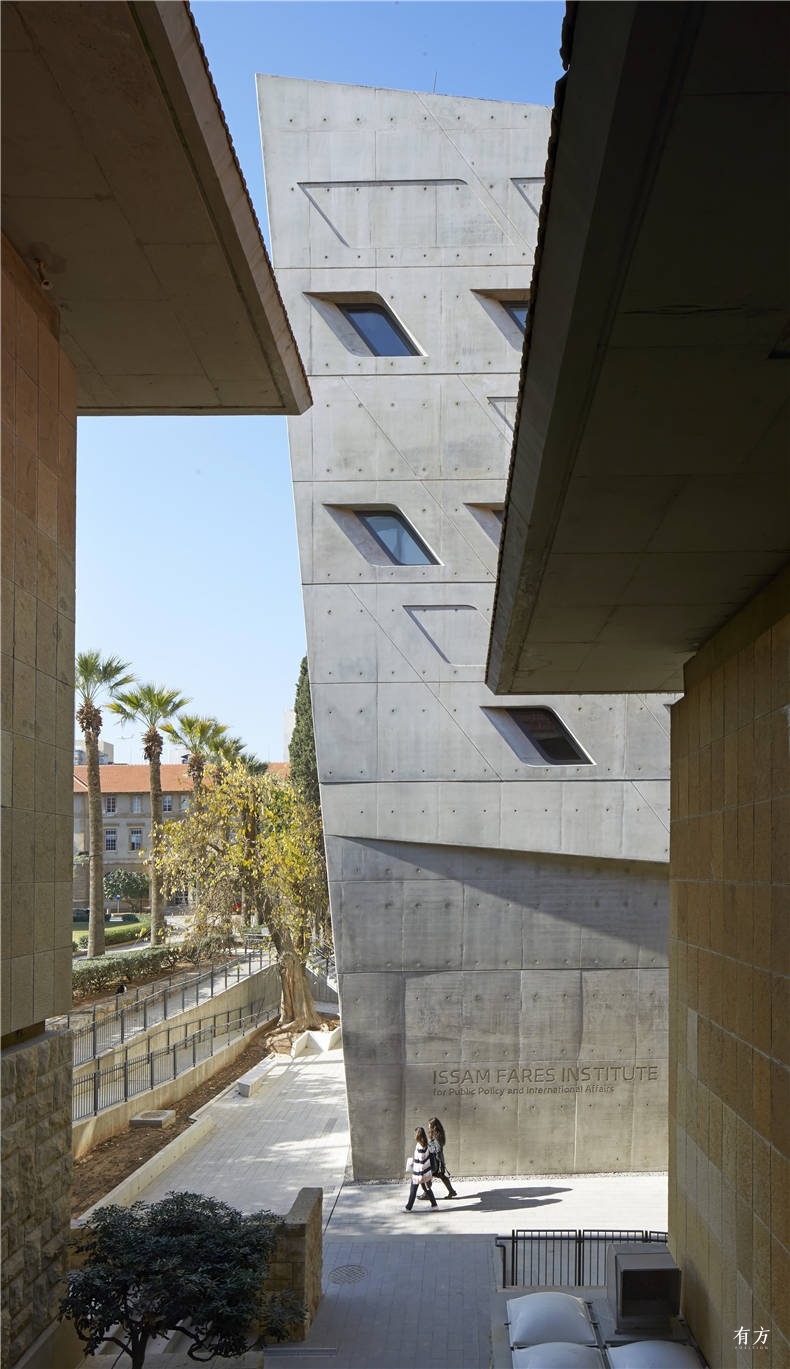
在2006年,竞赛评审团选择了ZHA建造新学院的方案。该设计通过将建筑入口庭院上方的大部分空间“挑空”,因此大大减少了建筑物的占地面积,从而保留了2002年总体规划内的现有景观,为校园创造了新的公共空间。从Central Oval 到校园中央区域,从地中海直至校园北部,新学院都与它们建立了联系。
In 2006, the competition jury selected ZHA’s proposal to build the new institute. The design significantly reduces the building’s footprint by ‘floating’ much of the IFI’s facilities above the entrance courtyard to preserve the existing landscape integral to the 2002 master-plan, create a new public space for the campus, and establish links from the university’s Central Oval to the Middle Campus and Mediterranean Sea to the north.
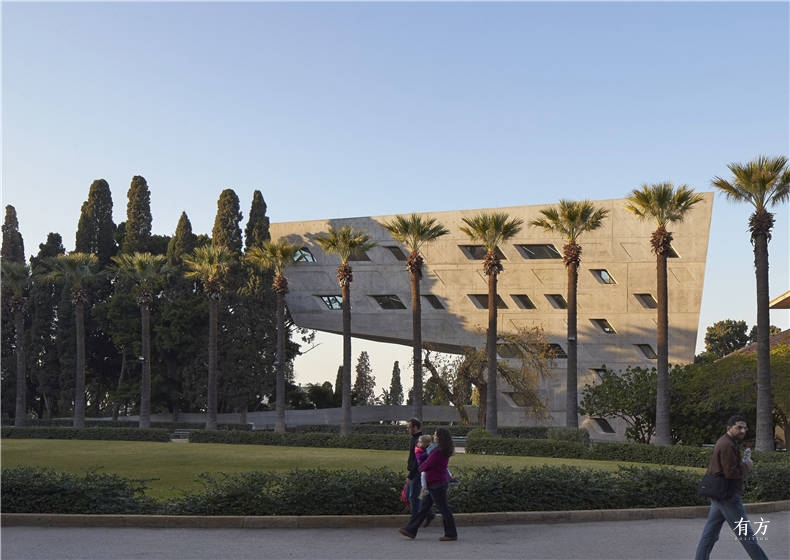
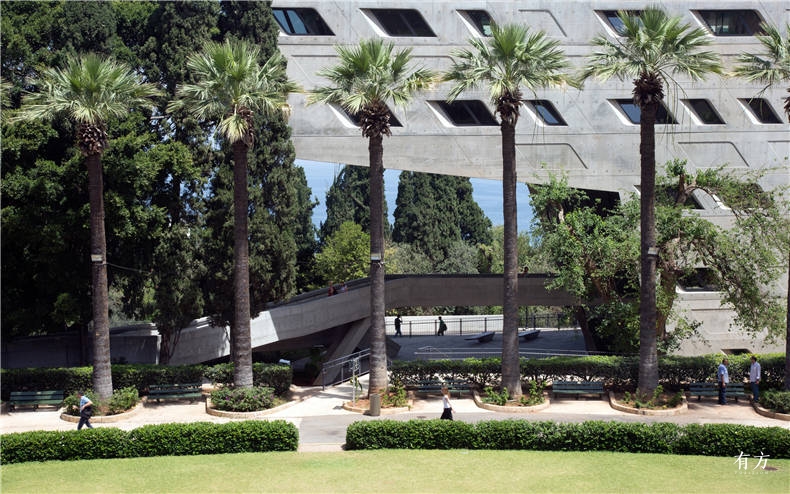
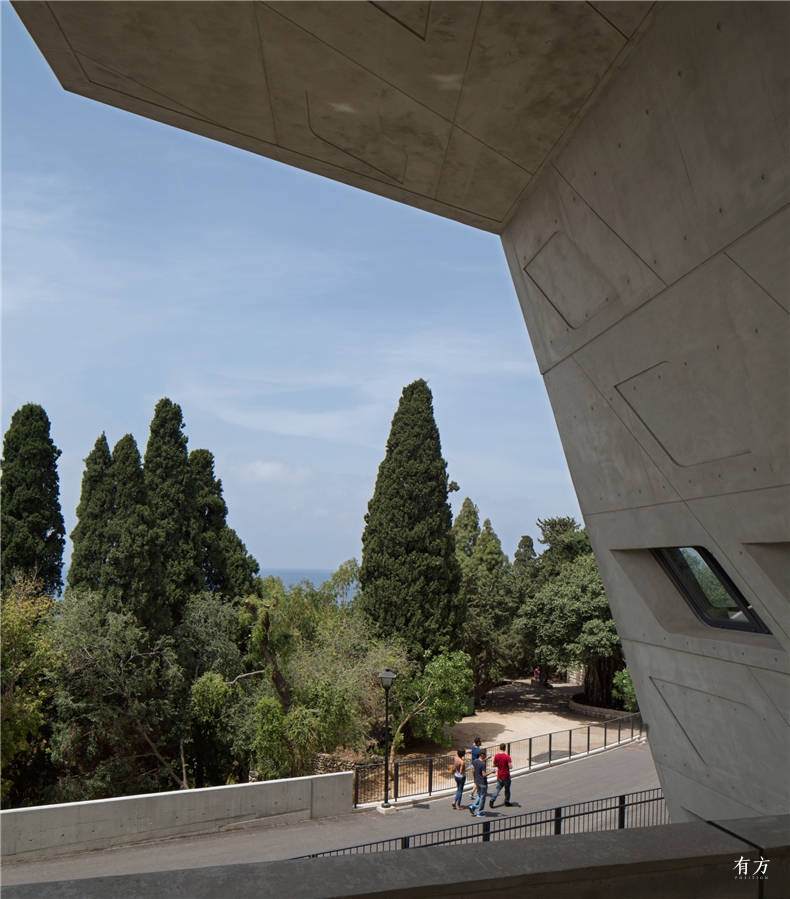
3000平方米的伊萨姆·菲尔斯学院由AUB内的多条道路和连接点来定义,校园内交织的道路和景观,为大学的中心区域打造了一个思想交流的集会场所,一个互动与对话的中心。
The 3,000 sq. m. Issam Fares Institute building is defined by the many routes and connections within AUB; interweaving the pathways and views within the campus to create a forum for the exchange of ideas - a centre of interaction and dialogue - at the heart of the university.
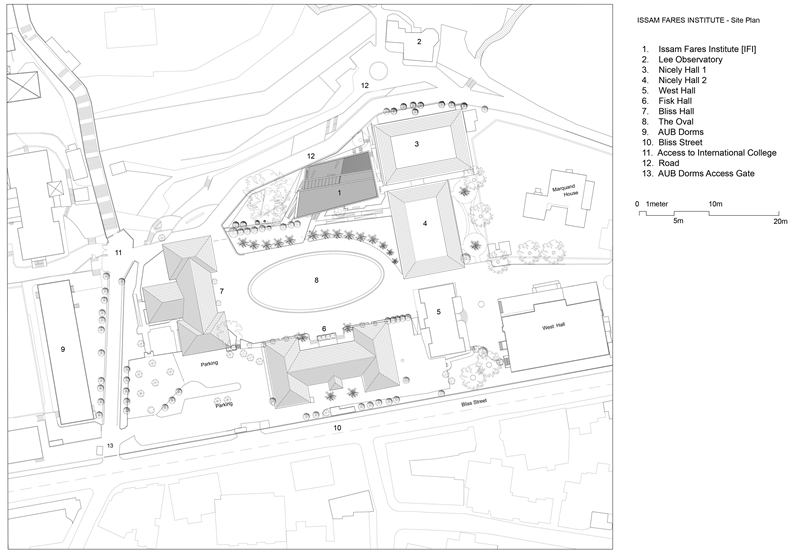
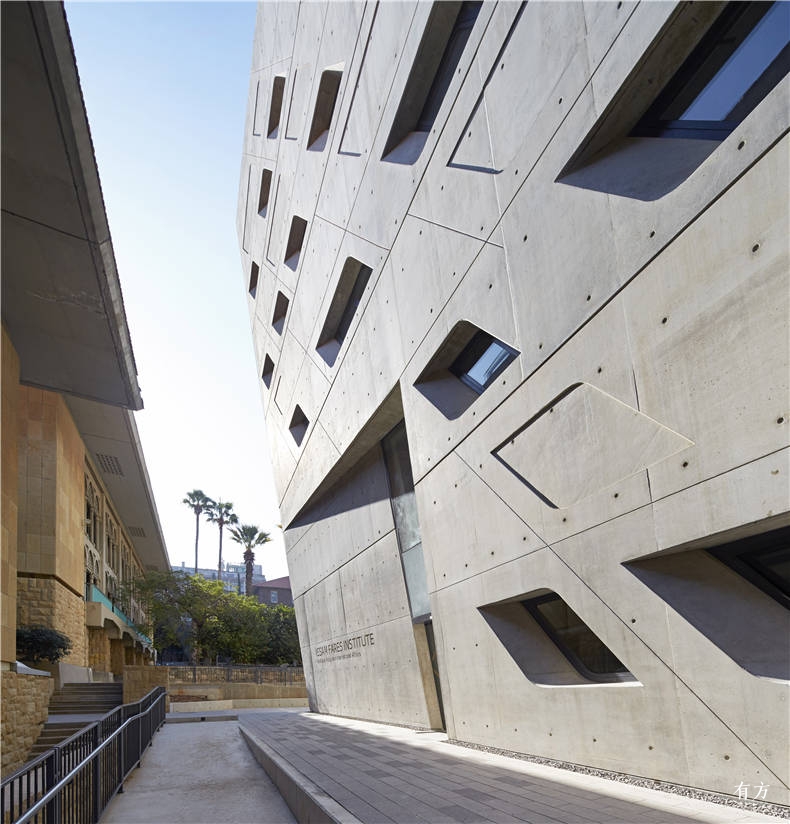
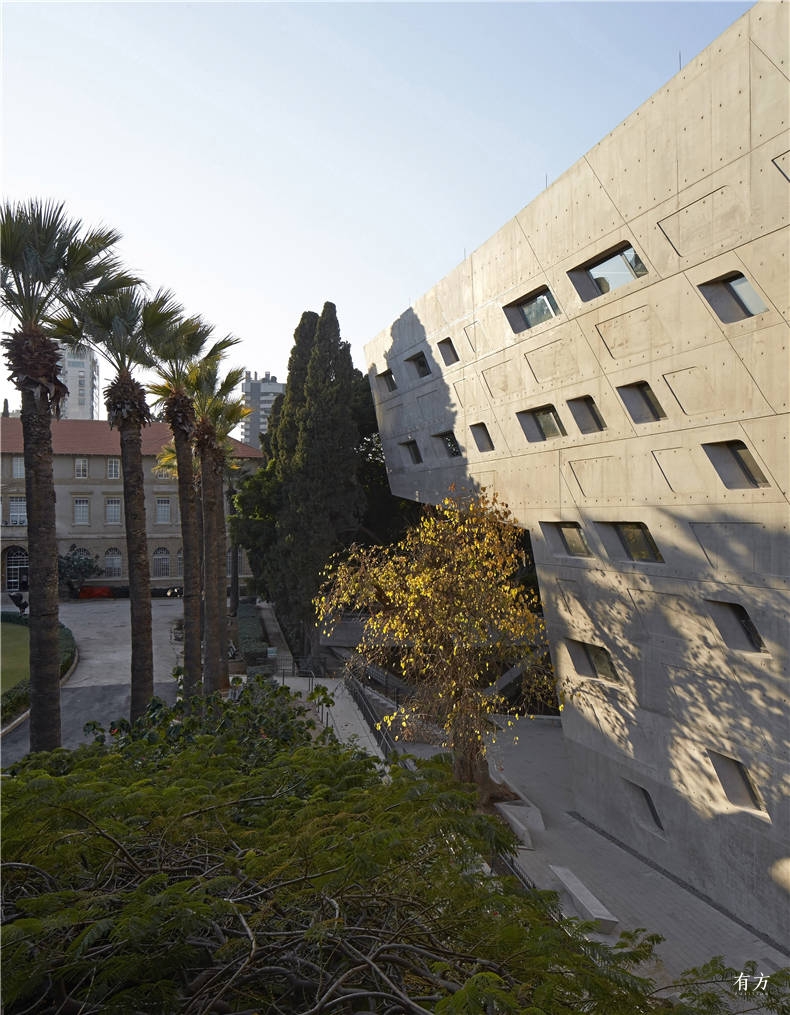
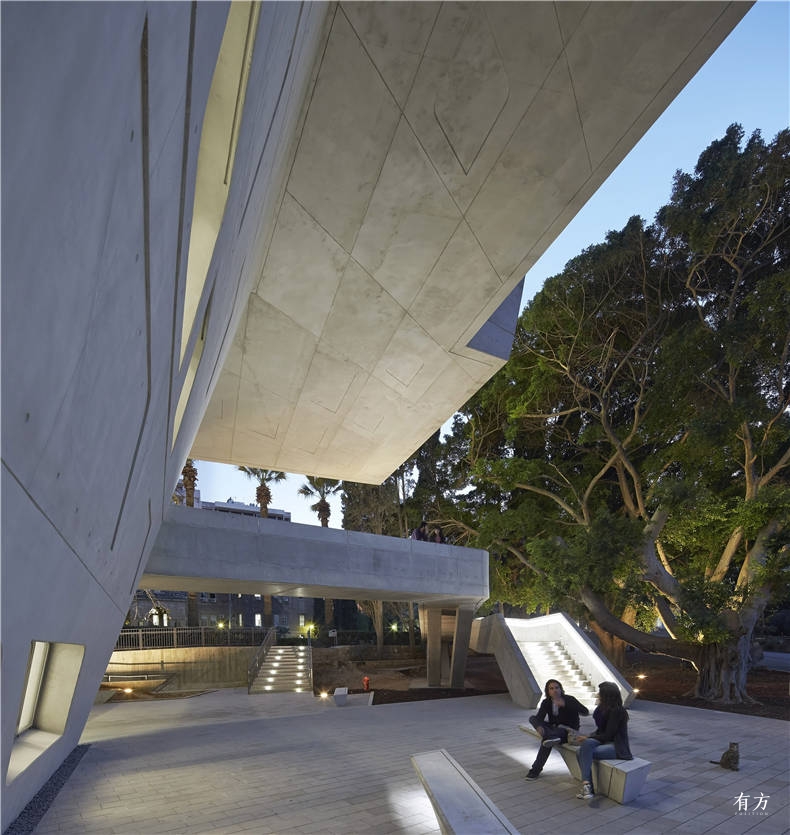
IFI的设计在Central Oval、校区中央的森林区域以及更远处的海洋之间的建立了新的联系。 IFI基地上现有的榕树和柏树(年龄在120至180岁之间)被融入了建筑设计之中。建筑始于交错道路所呈现的几何形状,它为研究、互动和讨论等活动提供一系列相互交叉的平台和空间。
The IFI design introduces new links between the Central Oval with the forested area of the Middle Campus and sea beyond. Existing Ficus and Cypress trees on the IFI site (aged between 120 and 180 years old) are integral to the design. The building emerges from the geometries of intersecting routes as a series of interlocking platforms and spaces for research, engagement and discourse.
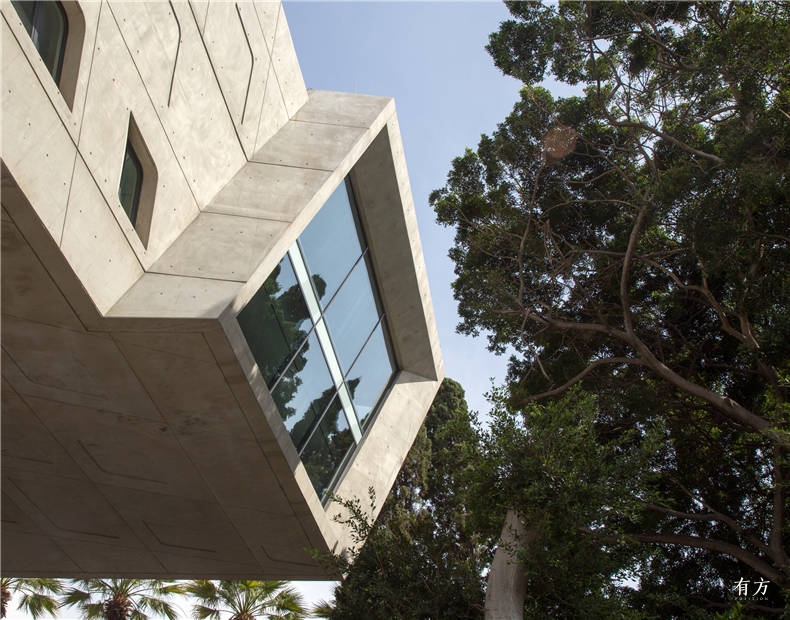
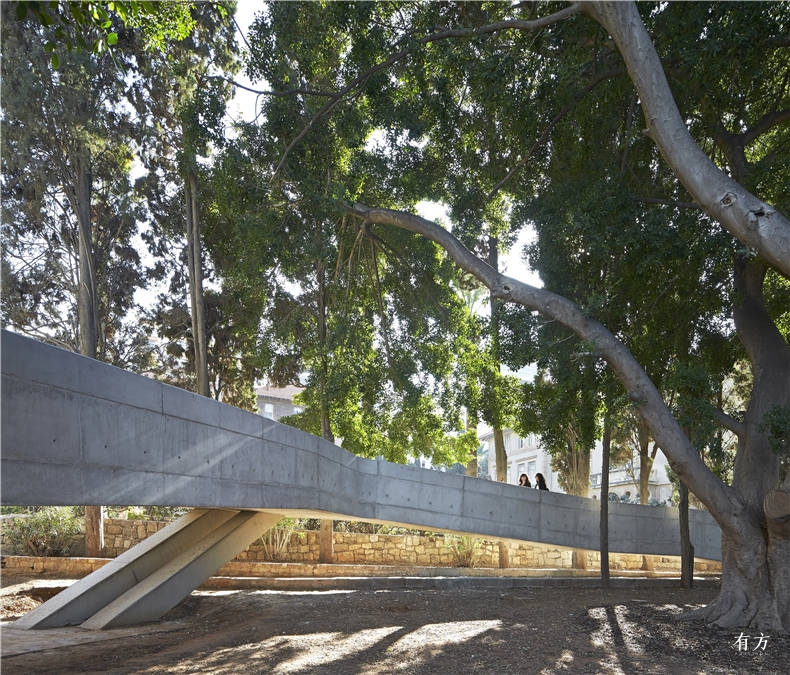
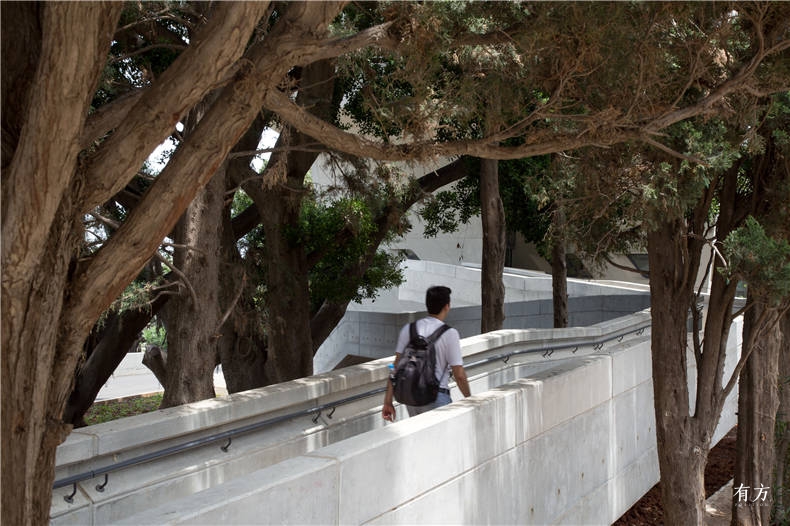
校园中的众多连接线和道路,在该建筑双层高的入口庭院中汇聚,由此为学院打造了一个内部社区。大学的这个新的民主空间是一个有顶的户外平台,是现有树木阴影区域的延伸,一个临时集会和非正式讨论的场所。
The institute invites the community inside via the many connections and paths that converge at its double-height entrance courtyard. This new civic space for the university is a covered outdoor terrace and extension of the shaded area beneath the existing trees - a place for chance meetings and informal discussion - located at the nexus of pathways that traverse the site.
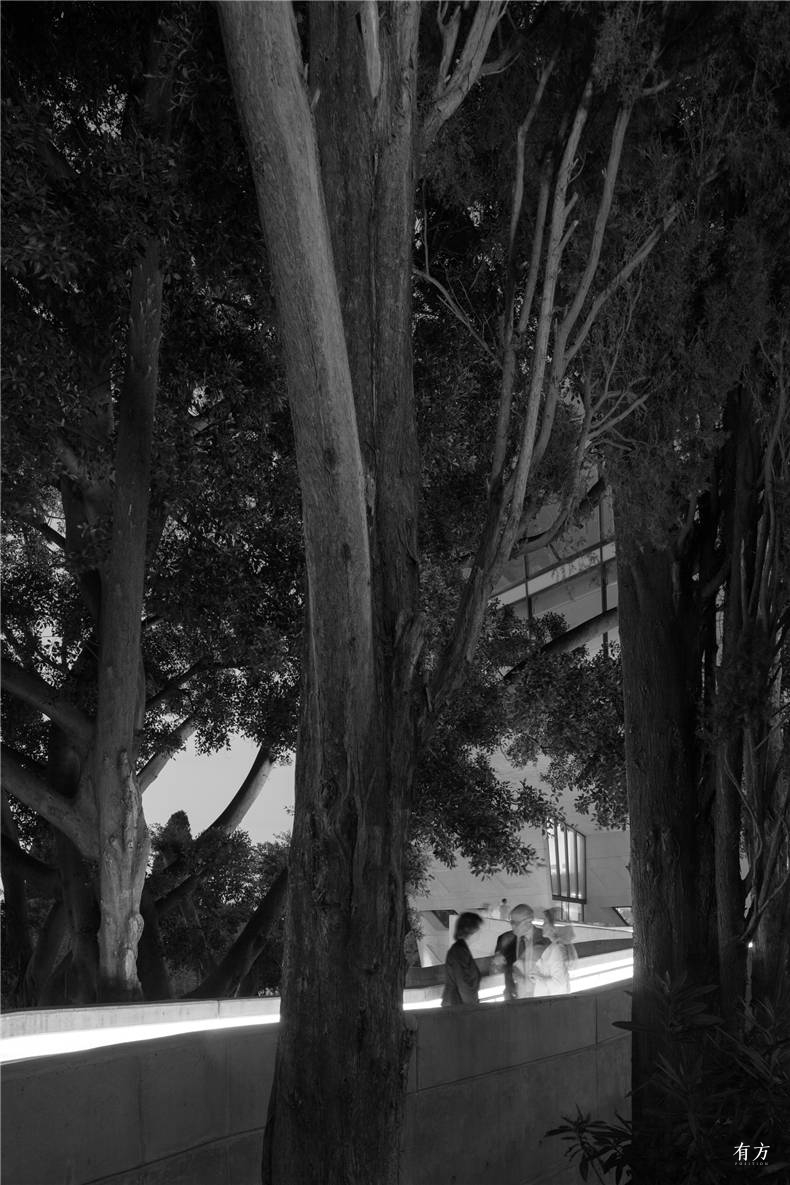
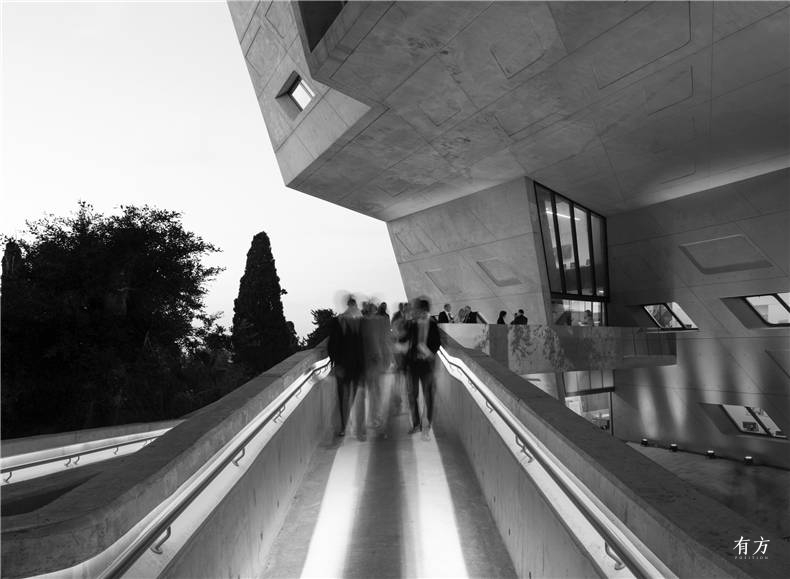
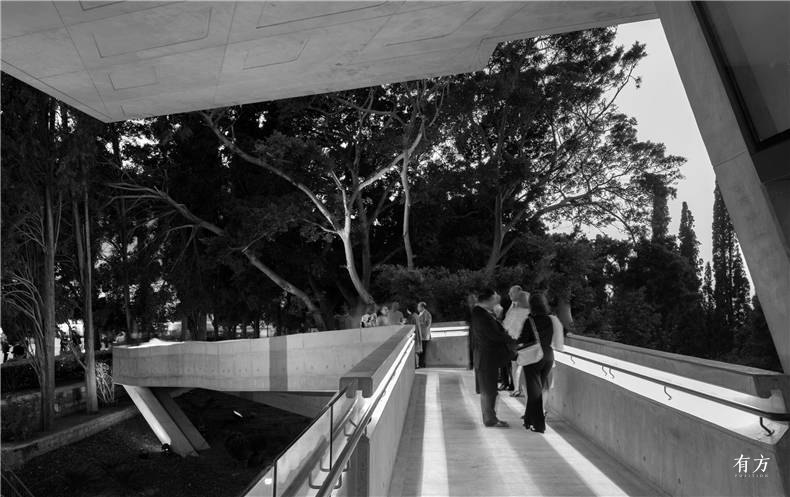
树木之间的斜坡将二楼的研究休息室与校园直接连接起来,而一楼的研讨室和办公室则从位于同一平面的东侧入口进入,或者经过公共庭院来到西侧入口。这些行进路线在IFI内部交错汇聚至中庭,这使得学院成为了“十字路口”,即这是一个学生,教师,研究人员和访客活动的中心枢纽。
A ramp leads between the trees to connect the research lounges on the second floor directly with the campus, while the first floor seminar room and offices are accessed at grade from the east and public courtyard to the west. These routes meet within the IFI to describe the atrium hall; establishing the institute as a crossroads - a central hub for students, faculty, researchers and visitors.
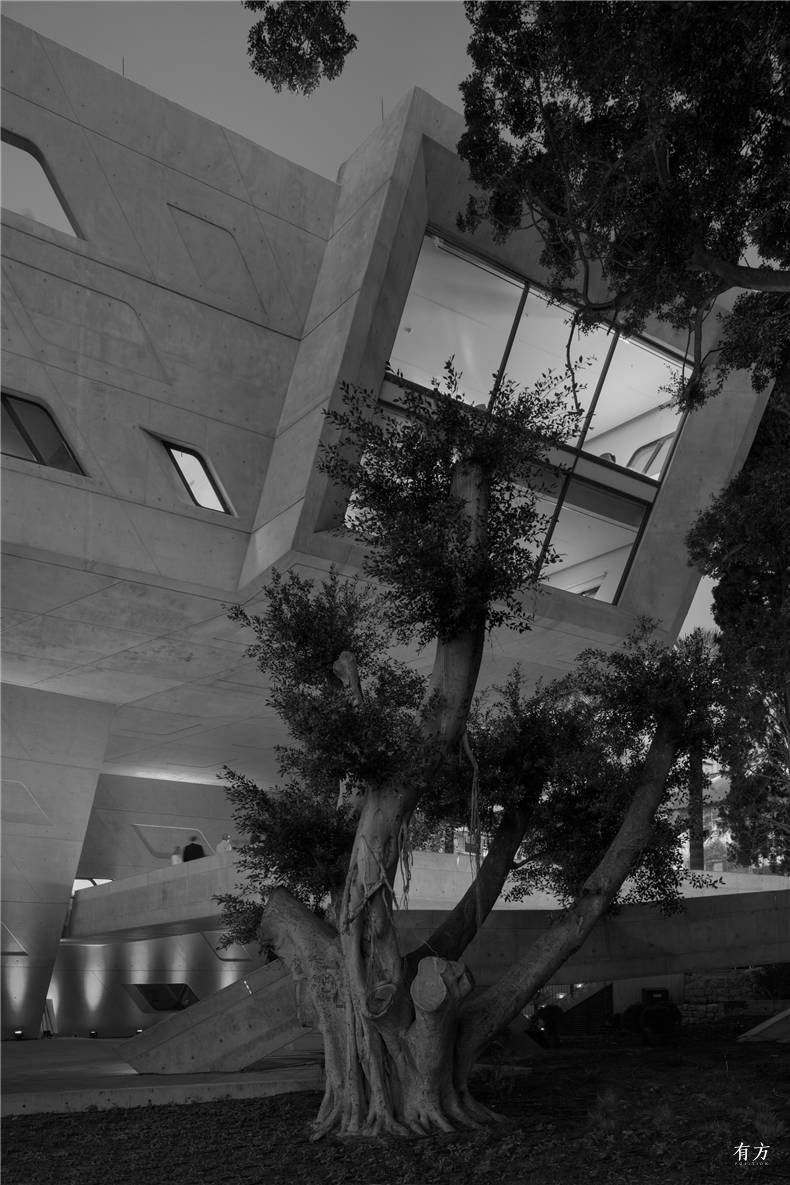
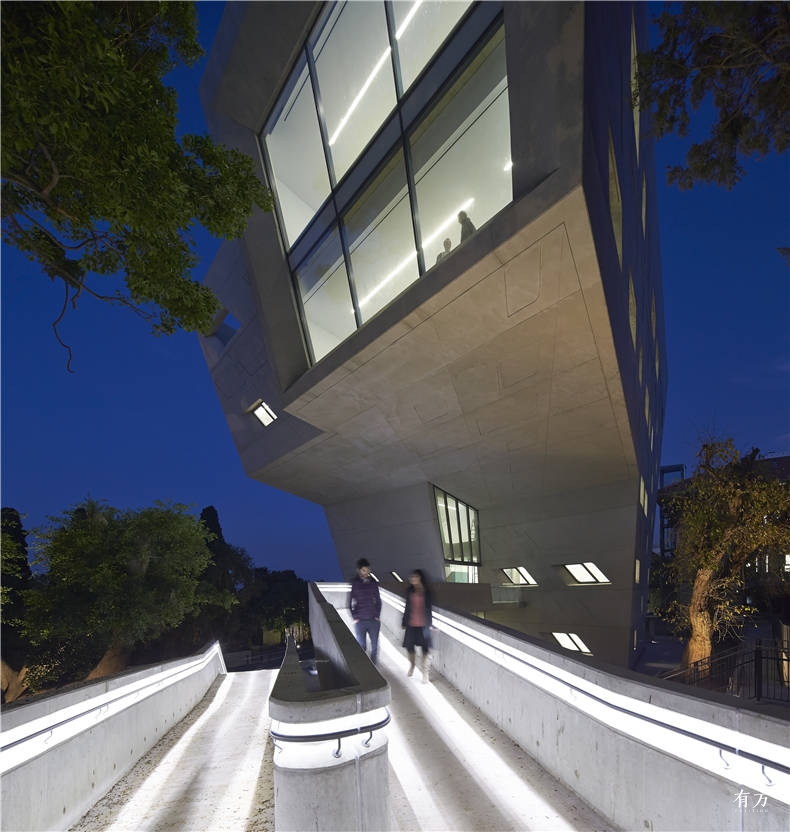
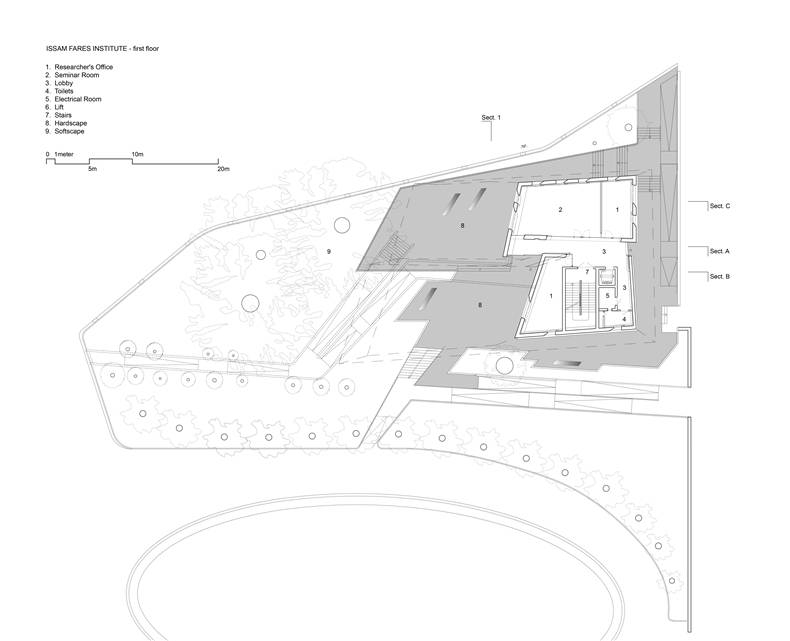
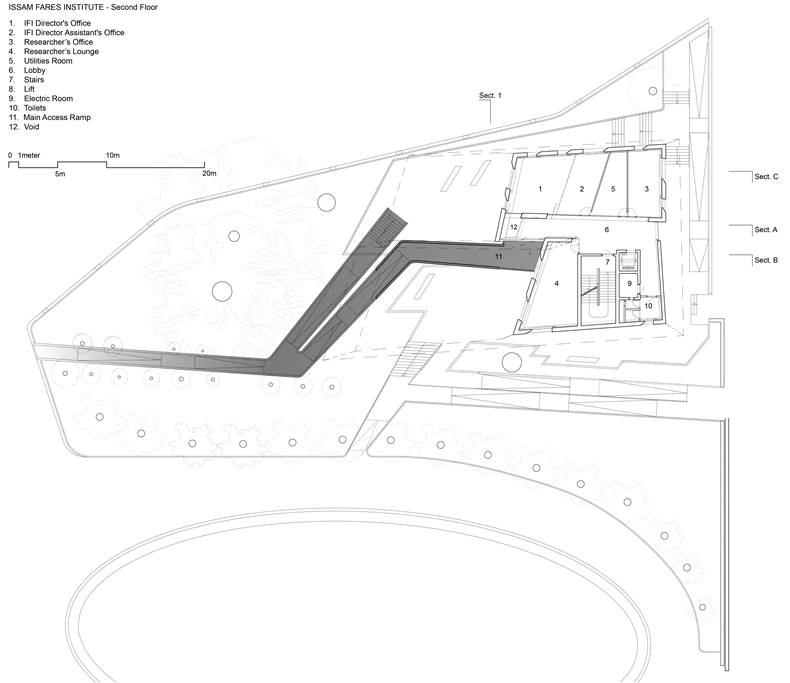
IFI的阅览室,小型会议室和研究室“悬浮”在外部庭院上方。
The IFI’s reading room, conference workshops and research rooms ‘float’ above the exterior courtyard.
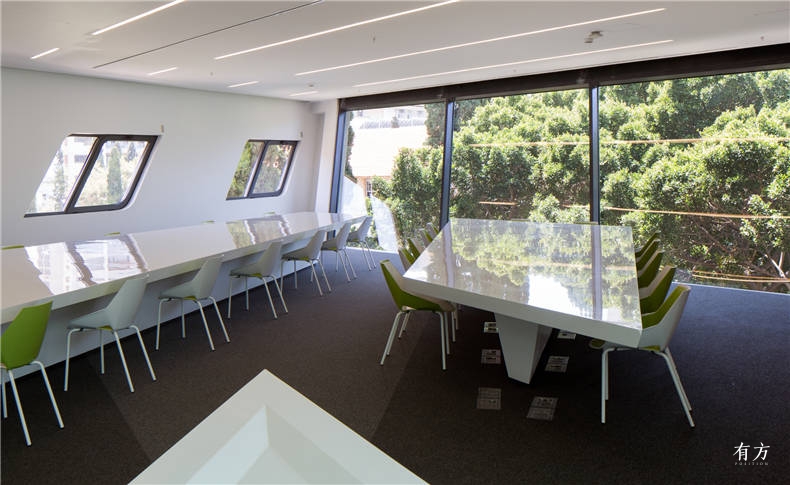
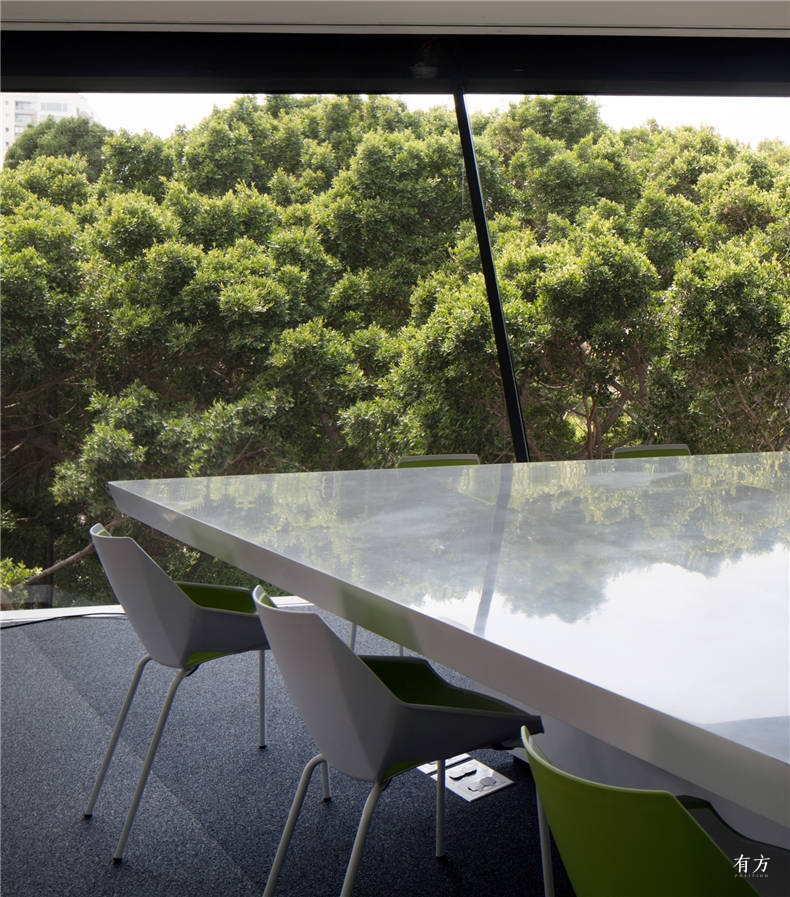
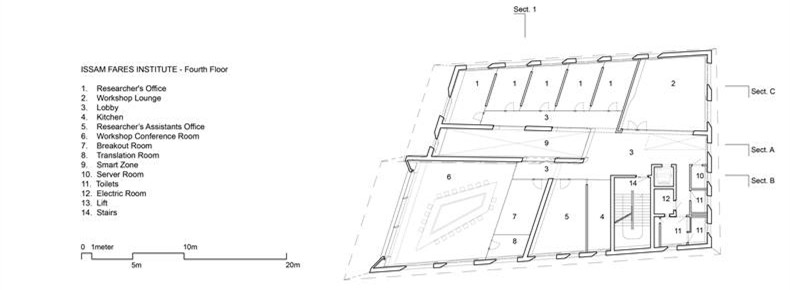
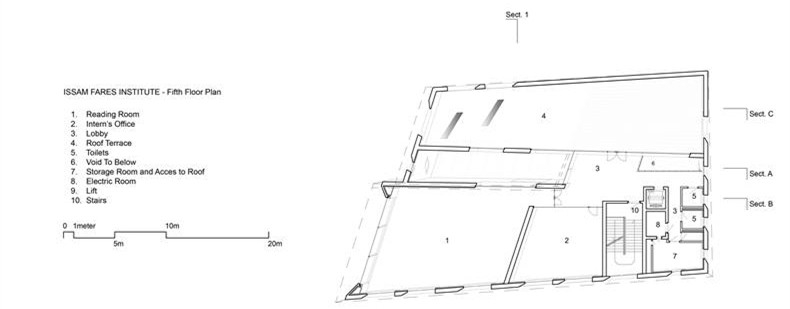
而设置有100个座位的礼堂位于最底层,有自己的入口,设计目的是为了让学院举办大型会议和演讲活动的同时,还不影响在整个大楼中工作的学生、教师和研究人员的活动。
The 100-seat auditorium is on the lowest level with its own entrance to the north, enabling the institute to host larger conferences and presentations without disrupting students, fellows and researchers working throughout the building.
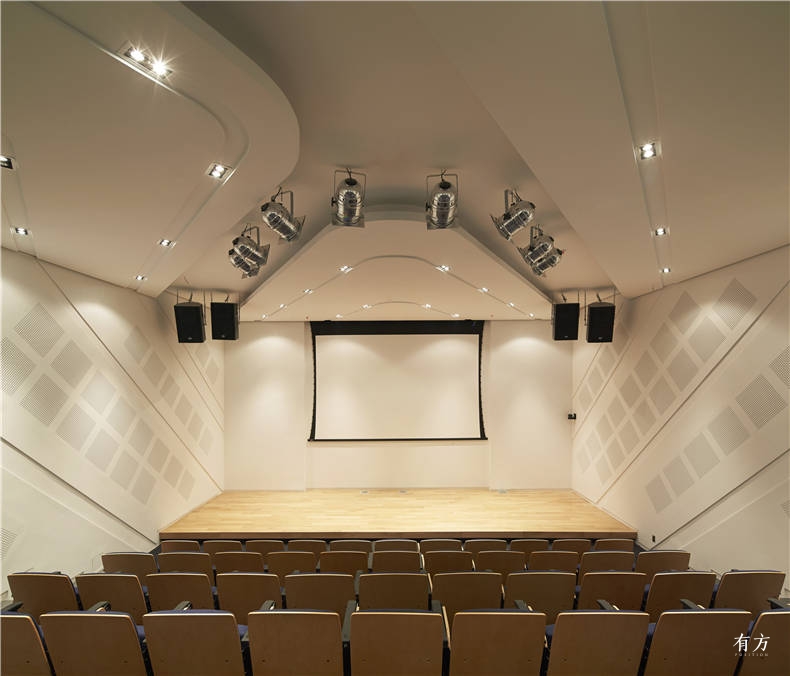
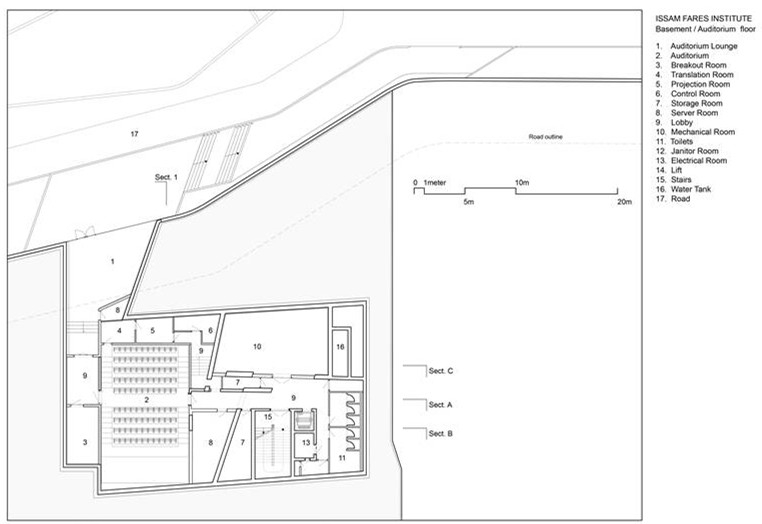
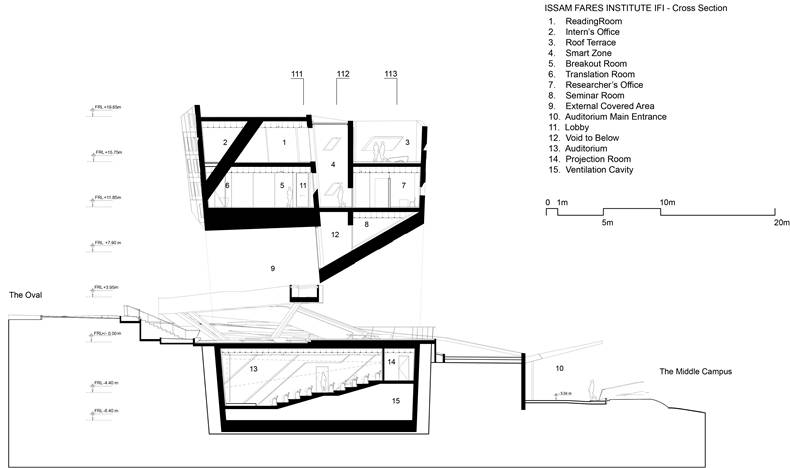
这些空间的内部隔墙采用油墨着色的玻璃,不是明显的区分和隔断,以此促进沟通和互动。
Inteal partitions are in ink-pigmented glass to enable communication and interaction.
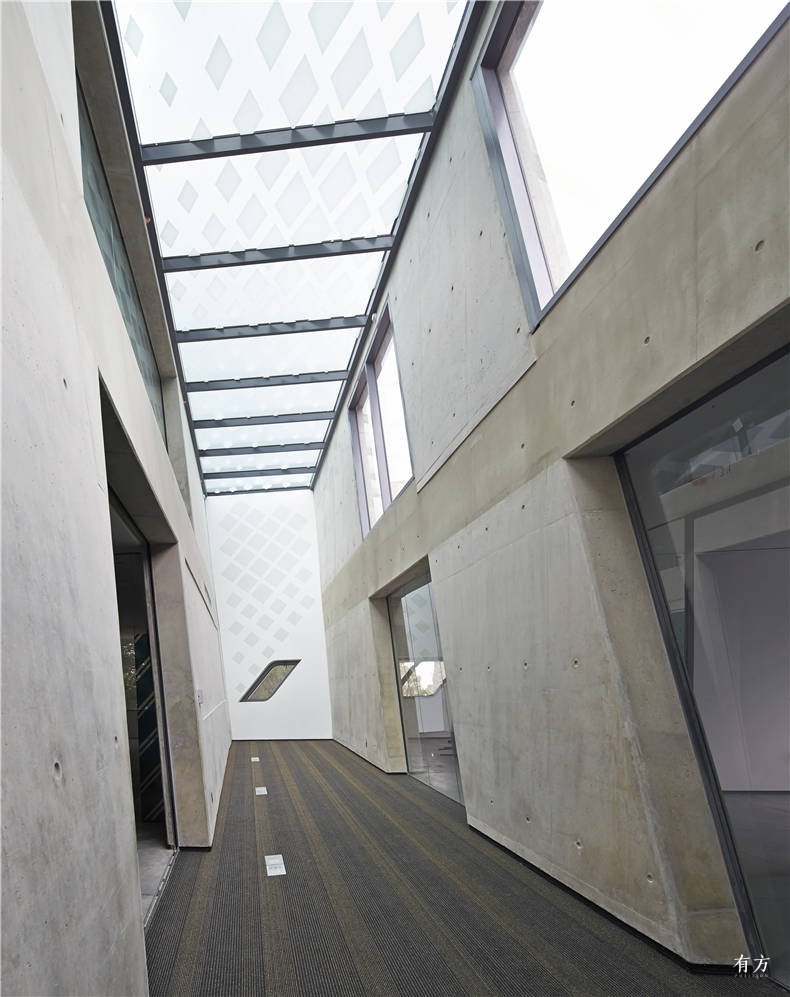
建筑充分利用了地方传统与专业技术结合的方式来现场制作混凝土。被动式设计方式,高效活动系统和水循环技术将建筑物对当地和更广泛范围的环境的影响降至最低。
The building takes full advantage of the region’s tradition and expertise of working with insitu concrete. Passive design measures, high efficiency active systems and recycled water technologies minimise the building’s impact on the local and wider environment.
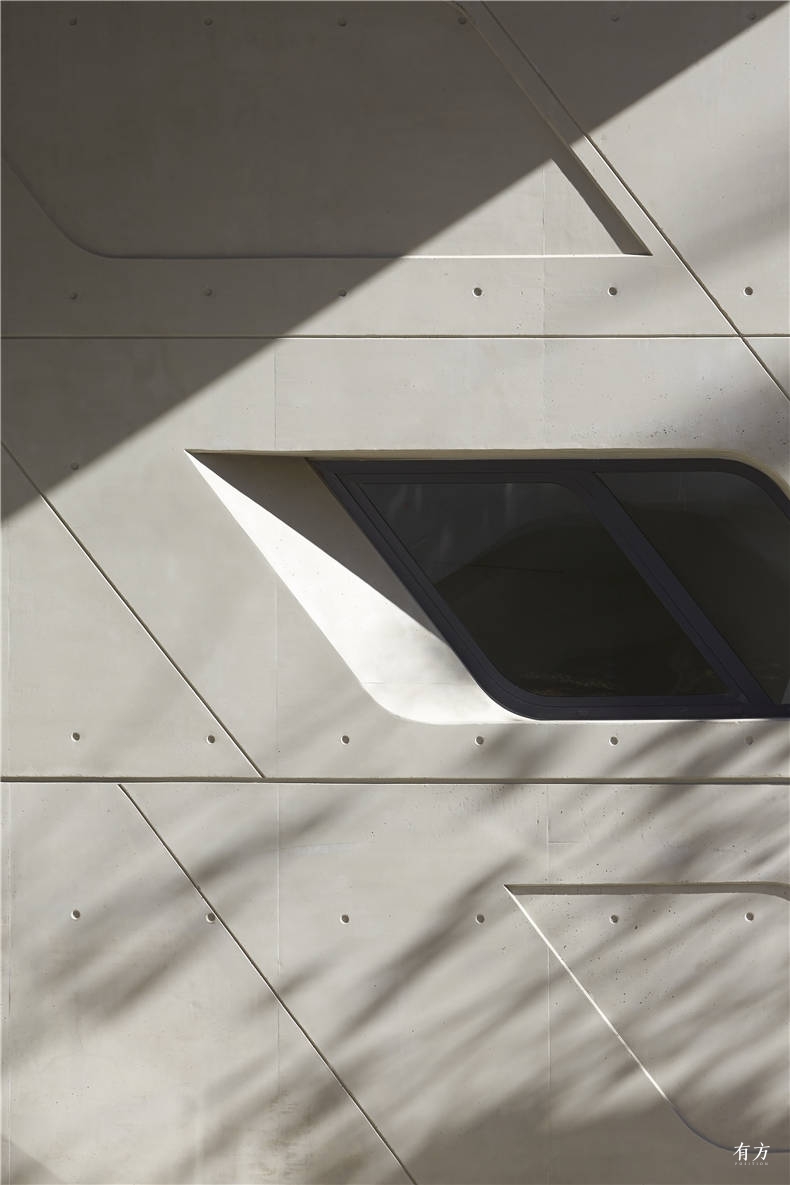
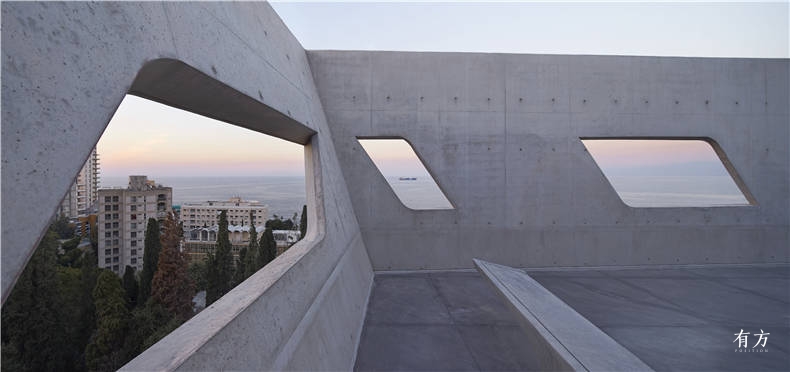
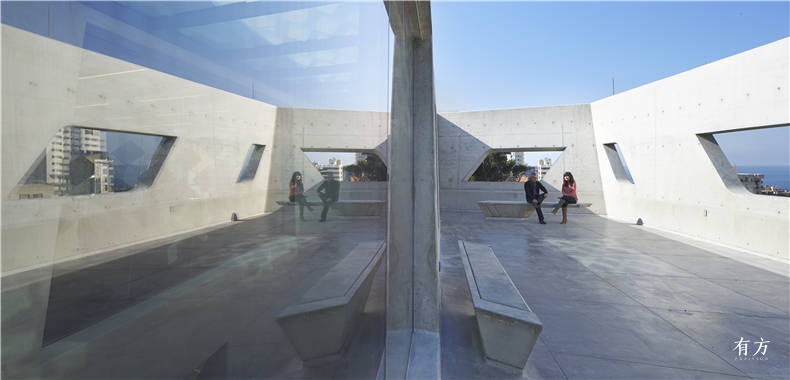
IFI的设计基于该学院的研究任务,它是AUB、各研究人员与世界群体之间的催化剂和连接器。校园内的道路、景观和连接处融合在一起,将IFI定义为一个“三维立体的交叉路口”,它为该大学的学生,研究人员和参观者提供了一个彼此会面,并同世界互相联络,互相交流的空间。
The IFI’ s design builds upon the institute’s mission as a catalyst and connector between AUB, researchers and the global community. Routes, views and links within the campus converge to define the IFI as a three-dimensional intersection; a space for university’s students, fellows and visitors to meet, connect and engage with each other and the wider world.
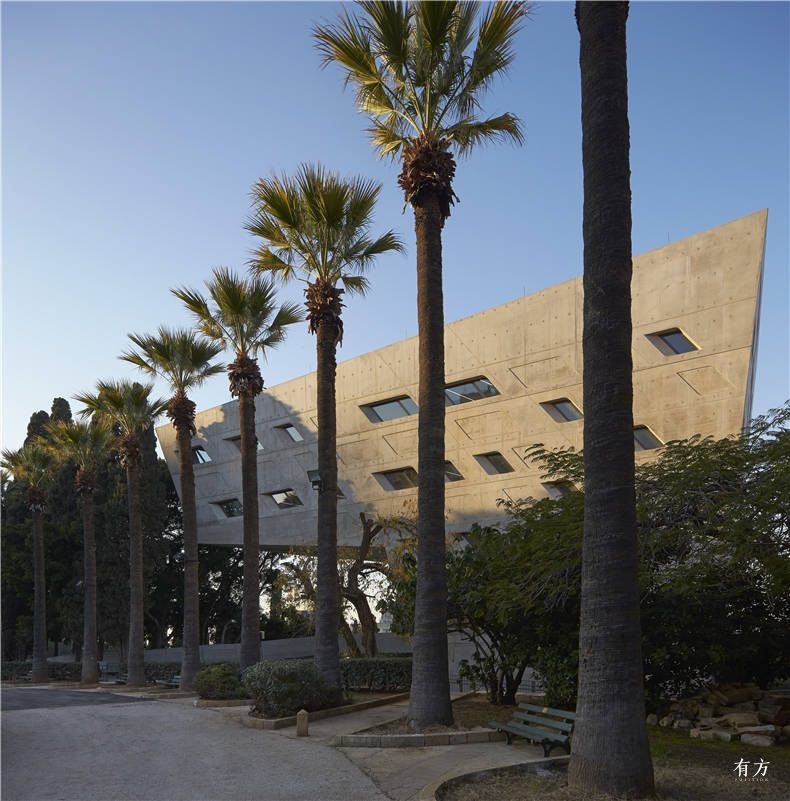
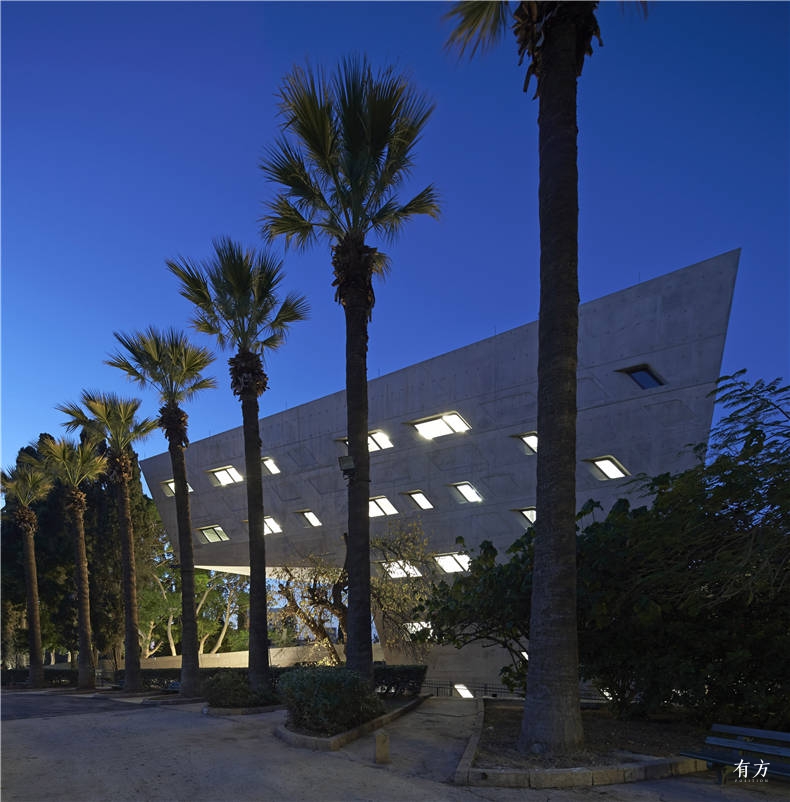
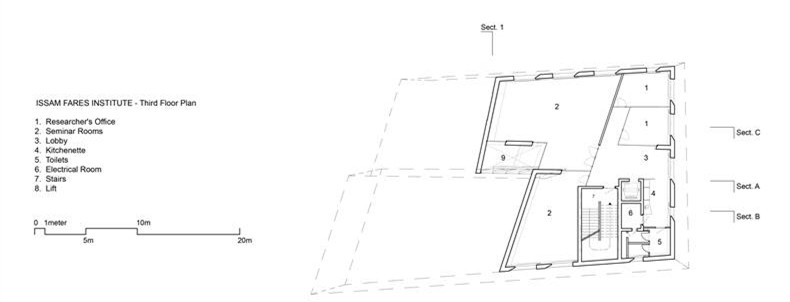
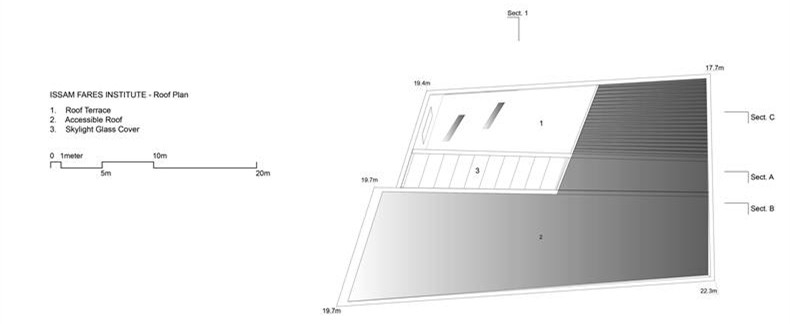
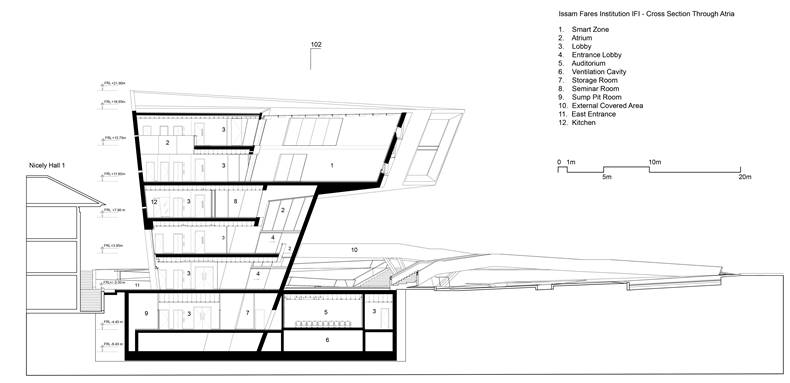
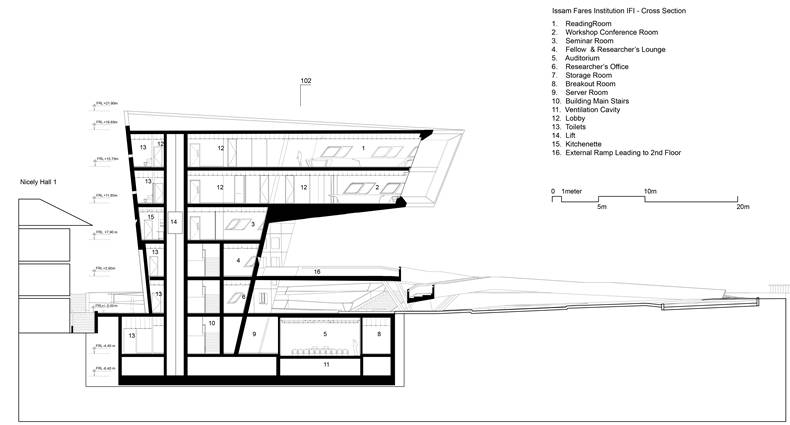
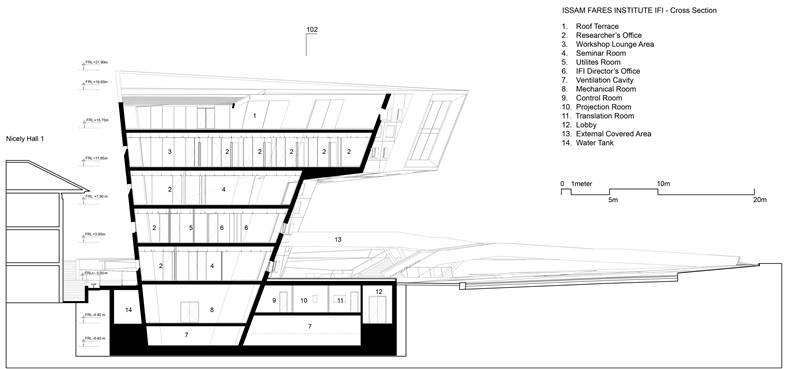
PROJECT: Issam Fares Institute for Public Policy & Inteational Affairs
LOCATION: Beirut, Lebanon
DATE: Completed 2014
PRIMARY CLIENT
American University of Beirut [AUB], Beirut, Lebanon
University President: Dr Peter Dorman
Facilities for Design & Planning Unit Director: Bassem Baroumi
IFI Project Manager: Alain Eid
CLIENT
Issam Fares Institute for Public Policy & Inteational Affairs [IFI]
Director: Dr Rami Khouri
ARCHITECTS
Architects: Zaha Hadid Architects (ZHA)
Design: Zaha Hadid and Patrik Schumacher
ZHA Project Architect: Saleem A. Jalil
ZHA Project Team: Christos Passas, Saleem A. Jalil, Graham Modlen, Human Talebi, Brandon Buck, Miya Ushida
ZHA Competition team: Saleem A. Jalil, Rokhsana Rakhshani, Teakjin Kim, Ben Holland, Charbel Chagoury, Anas Younes, Fulvio Wirtz, Mariagrazia Lanza, Renata Dantas.
Local Architect: Rafik El Khoury & Partners (Hazar Mansour, Roger Skaff)
Structural Engineering: Rafik El Khoury & Partners (Rafik El Khoury, Georges Sfeir, Maya Charry, Guy Ghosn, Roger Skaff)
Mechanical Engineering: ZEF London (DD stage) / Rabih. Rafik El Khoury & Partners (Issam Mourrad)
Electrical Engineering: Rafik El Khoury & Partners (Karim Nammar)
Acoustic Consultant: Rafik El Khoury & Partners (Wassim Sader)
Contract Administrator: Rafik El Khoury & Partners (Roger Skaff, Zeina Bou Mikhael)
CONTRACTOR: DRAWINGS & CONSTRUCTION
Kettaneh Construction s.a.r.l. Project Director: Bahzad Choubassi Site Manager: Elie Awaad
Project Coordinator: Sabine Choubassi, Assem Soubra
Mechanical Coordinator: Georges Saade
MEP Subcontractor: CLIMTECH
Structural Engineers [Post-Tension]: Darweesh Haddad
DIMENSIONS
Total site area: 7,000 m²
New exterior spaces: 4,000 m²
Total floor area: 3,000 m²
Auditorium capacity: 100 seats
Floors: 6
Maximum height: 22 m
Length of cantilever: 21 m
PROGRAM
Research and Administration offices
Seminar Rooms and Workshops
Conference Room / Auditorium
Reading Room
Recreational Lounge
Roof Terrace
CONSTRUCTION DATA
Total surface of fair-faced concrete: 6,000 m²
Total surface area of glazing: 800 m²
Concrete cast in-situ: 4,200 m³
Total Steel used for structure: 800 kg
Employees on site: 90 (builders & technicians) for 1,100 days
Total working hours: 500,000 hours
版权声明:本文由Zaha Hadid Architects授权发布,禁止以有方编辑后版本转载。
上一篇:如闻:与茶有关的室 / 爻见联合工作室
下一篇:AIA宣布2018年住宅奖(Housing Awards)得主